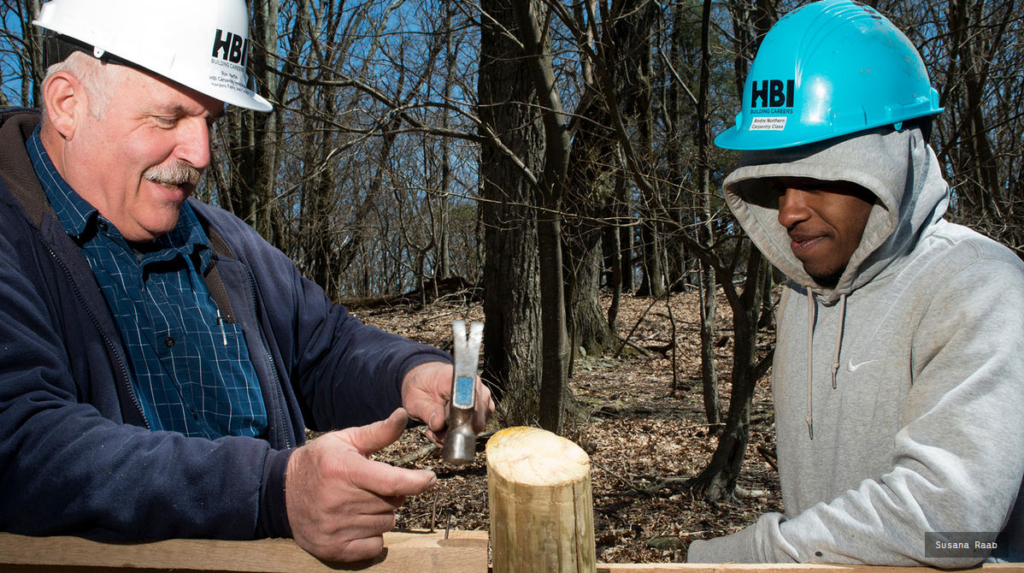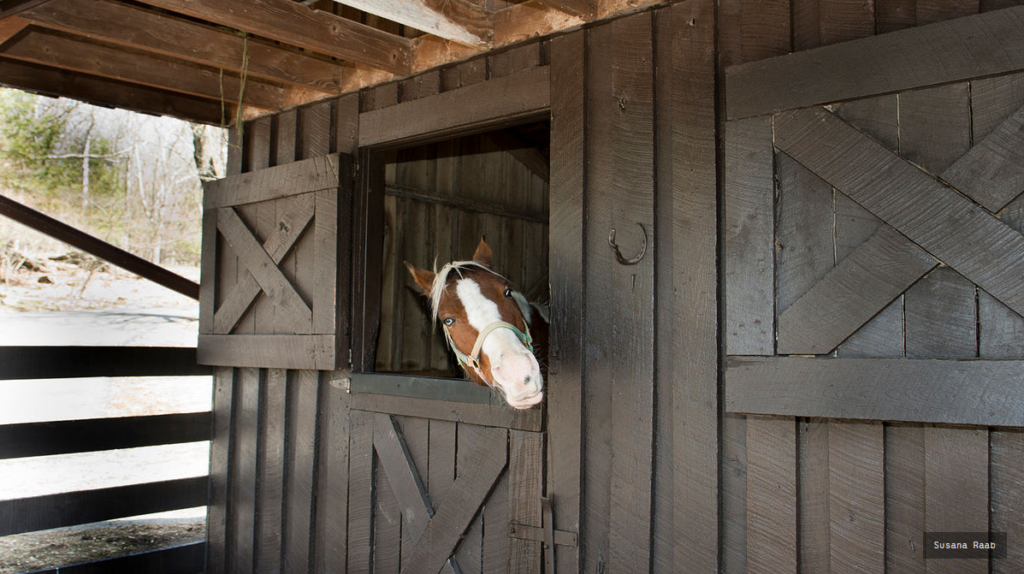Article by: Lauren Walser, Saving Places | 17 June 2014
When a crew of young members of the Citizens Conservation Corps of West Virginia arrived at Shenandoah National Park’s Skyland Stable in March 2014, they knew plenty about construction, but not much about historic preservation.
Less than three months later, however, the once-dilapidated stable looked much as it did when it was built in 1939, thanks to the young corpsmembers who trained alongside preservation professionals to conduct a large-scale rehabilitation of the property.
It was the first project under the National Trust for Historic Preservation’s Hands-On Preservation Experience (HOPE) Crew, a program that works with youth corps across the country to teach young people practical preservation skills.
The idea behind HOPE Crew, says Monica Rhodes, director of the program at the National Trust, is to engage the next generation of young preservationists.
“And in doing so,” she says, “we’re opening up the field of preservation to an audience that might not get exposure to it.”
In the HOPE Crew’s pilot project, the corpsmembers were introduced to preservation via the 75-year-old rustic wooden Skyland Stable. Owned by the National Park Service, the stable provides trail rides to park visitors, connecting them with 200 miles of equestrian trails.

But after decades of wear and tear, the stable was in need of work: Wooden planks were rotting and falling from the stable’s frame, doors were coming off the hinges, the fences surrounding the property were deteriorating.
It was clear the corpsmembers had their work cut out for them. But, Rhodes says, they were in good hands with professionals like Virginia-based architect Fred Andreae, who served as the project’s preservation adviser, and David Logan, owner of Vintage Inc., a building company specializing in historic restoration.
“I tried to create a conversation with them and share different approaches we could take with old buildings,” Logan says.
Stay connected with us via email. Sign up today.
Sign up for email updates
Email AddressGet Updates
Over the next several weeks, Andreae, Logan, and the corpsmembers remodeled and replaced the deteriorating pieces of the structure. They repaired the stable doors, fences, and the timber skeleton, and they applied a stain to the entire structure.
“It was hard work,” Rhodes says. “They were waking up early in the morning and working until 5 in the evening. And it was freezing outside, but they were out there, hammering away.”
While the corpsmembers are always eager to learn new skills, says JAK Kincaid, director of programs and development with the Citizens Conservation Corps of West Virginia, they were especially excited to take on a new challenge like rehabilitating a historic structure.
“Our corpsmembers were hungry to go out and learn this new skill,” he says. “We’re very proud of them.”

The official ribbon-cutting for the newly restored stables was held in June 2014. And not long after the ceremony ended, park visitors were lining up outside the stables to rent horses.
“The corpsmembers got to see the immediate result of their work,” Rhodes says.
Rhodes credits the project’s success to a number of close collaborations with partners: the National Park Service; the Citizens Conservation Corps of West Virginia; Delaware North, the concessionaire that operates Skyland Stable; Harper’s Ferry Job Corps; The Corps Network, the national advocacy and support group for youth development programs that helps identify partnerships between corps programs and the National Trust; and professionals like Logan and Andreae who were willing to share their skills and knowledge with the young corpsmembers.
“It’s all the partners who make it possible,” she says.
And by making projects like this possible, a new generation is equipped to care for the country’s historic sites.
“Beyond the professional development aspect, it’s critical for young people to go out and take an active role in conservation and preservation,” Kincaid says. “We want our young people to go out and actually get involved. We want them to do that and to pass it on to future generations. This was an excellent vehicle for that.”

I was very pleased to uncover this web site. I want to to thank you for your time due to this fantastic read!! I definitely appreciated every bit of it and I have you bookmarked to look at new things on your website.
Thanks.